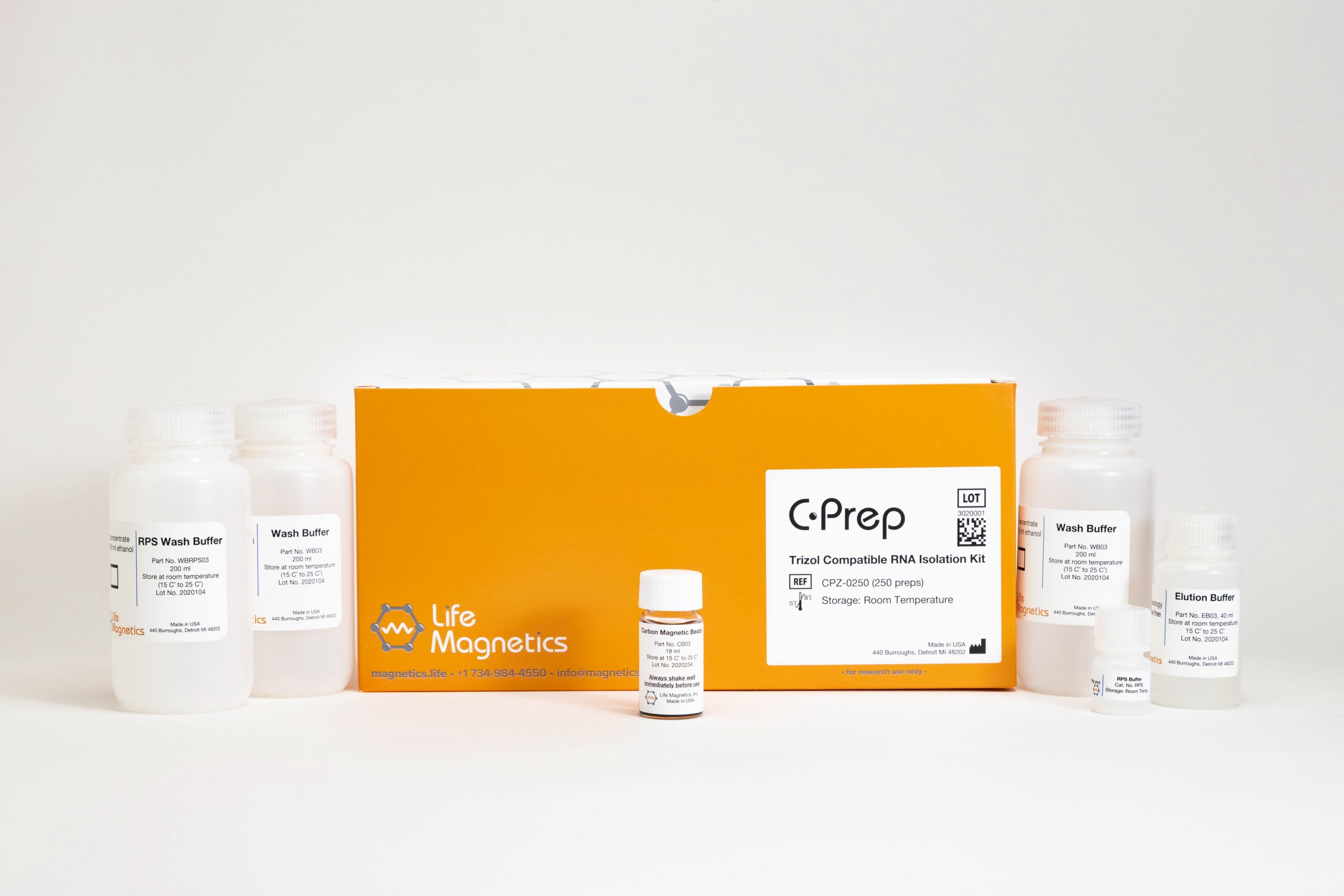C·Prep Phenol/Trizol RNA Extraction & Isolation Kit
$75.00 – $945.00Price range: $75.00 through $945.00
The C·Prep Phenol/Trizol RNA Extraction & Isolation Kit is a supplemental kit which is used in conjunction with acid guanidinium thiocyanate-phenol-chloroform lysis buffers, such as Trizol. This product further improves on Phenol/chloroform extractions, which are already the gold standard of RNA isolation. This product will work with any sample and give consistently excellent yield without any phenol carryover into the elute. The most significant problem is that the lysis buffers use phenol. Start here if you’re not sure which product to pick and your lab can handle phenolic lysis buffers.
Available Options:
| Purpose | General purpose phenol/Trizol RNA extraction & isolation. Works with any sample type and provides the highest purity and yield. The main disadvantage is that acid guanidinium-phenol lysis buffers are hazardous. We recommend starting with this kit if you’re working with an unknown sample and are not sure which product to pick and your lab has equipment to handle phenolic lysis buffers. |
|---|---|
| Format and Technology | Magnetic Beads; Carbon Technology |
| Processing Time | 15 min |
| Type of RNA Purified | Total RNA (includes ribosomal RNA, mRNA, and small RNAs) |
| Application | Northern, dot, and slot blotting, end-point RT-PCR, quantitative, real-time RT-PCR, next-generation sequencing |
| Processing | Manual or automated. Manual protocols use a water bath to release RNA, while automated protocols use robotic agitation to release RNA. |
| Main Sample Type | All samples. Plant samples have separate protocol. |
| Elution Volume | 30-100 µl |
| Sample Size | 2-5 million cells are the standard input and reagent consumption scales with the number of cells. Fewer cells may be used and the reagent use scales accordingly meaning that if fewer cells are used the kit will be good for more than the listed number of reactions and vice versa. |
| Kit Storage | Room Temperature |
| Genomic DNA contamination | Carbon technology is >100x more selective than silica for RNA. In routine extractions gDNA contamination is typically ~0.5% – 1% of the sample making DNase cleanup unnecessary for routine PCR applications. If your application requires even higher purity, optimization of the protocol for your specific sample can result in <0.1% gDNA contamination. |
Li X, Frazier JA, Spahiu E, McPherson M, Miller RA. Muscle-dependent regulation of adipose tissue function in long-lived growth hormone-mutant mice. Aging (Albany NY). 2020;12(10):8766‐8789. doi:10.18632/aging.103380
Jones, L. B. et al. Effects of Pseudomonas aeruginosa on microglial-derived extracellular vesicle biogenesis and composition. Pathogens 8, 297 (2019). doi:10.3390/pathogens8040297
Shah, S., Brock, E. J., Jackson, R. M., Ji, K., Boerner, J. L., Sloane, B. F., & Mattingly, R. R. (2018). Downregulation of Rap1Gap: A Switch from DCIS to Invasive Breast Carcinoma via ERK/MAPK Activation. Neoplasia (New York, N.Y.), 20(9), 951–963. doi:10.1016/j.neo.2018.07.002
Safety data sheets for all materials included in kit:
